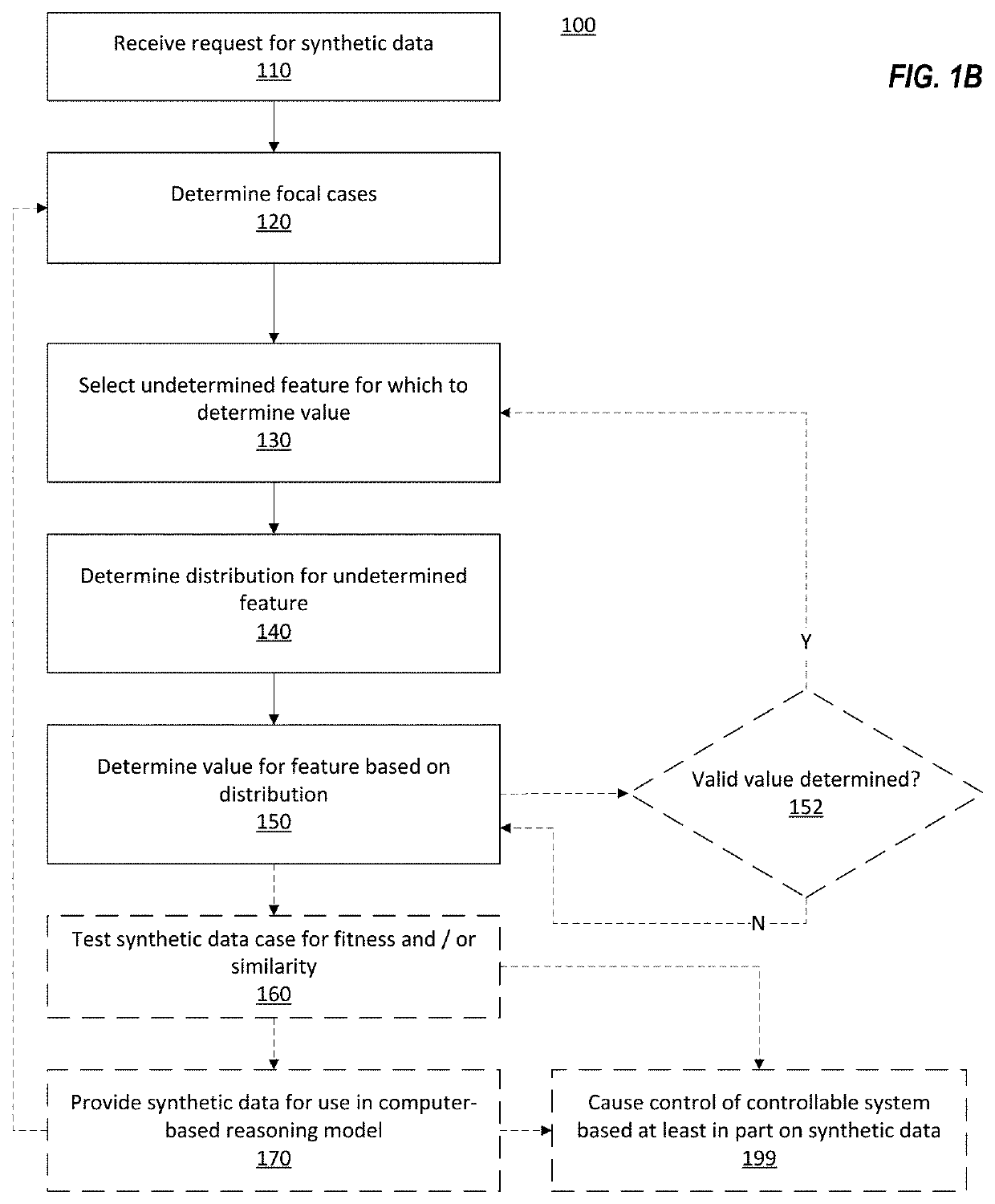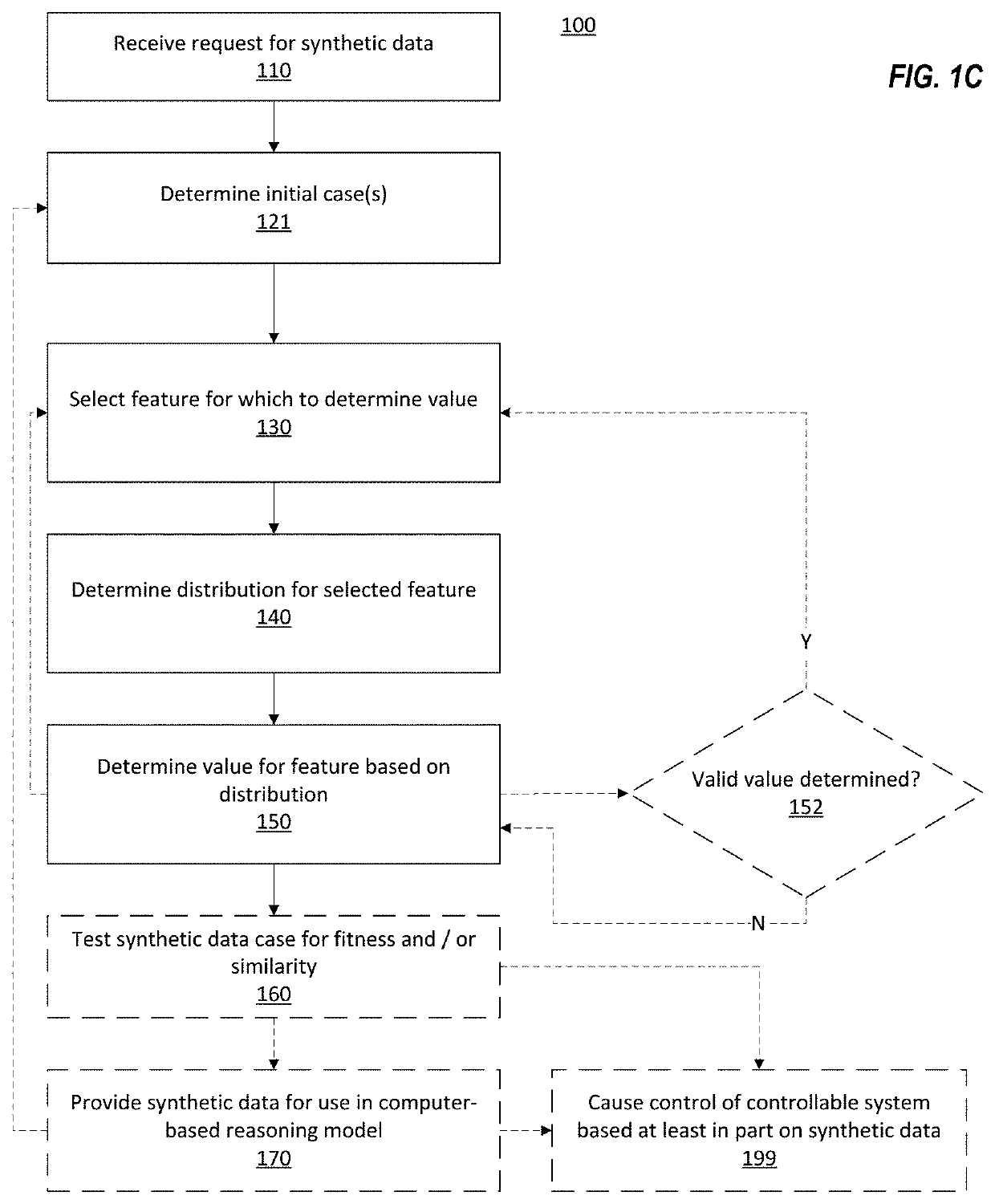Synthetic Data Generation in Computer-Based Reasoning Systems
a computer-based reasoning and synthetic data technology, applied in the field of synthetic data generation in computer-based reasoning systems, can solve problems such as the inability to anonymize data in a way that satisfies user expectations, the acquisition of training data, and the inability to meet user expectations
- Summary
- Abstract
- Description
- Claims
- Application Information
AI Technical Summary
Benefits of technology
Problems solved by technology
Method used
Image
Examples
example time series embodiments
[0050]Data cases are discussed extensively elsewhere herein. Further to those discussions, in some embodiments, data cases may include features related to time series information for the features. For example, a data case at time “t0” may include N features. In some embodiments, in addition to those N features from time t0, one or more time series features may also be included, such as values from t(−1), t(−2), etc. The time series features may be previous value(s) for feature(s), difference(s) between the current value(s) and previous value(s), interpolated value(s) of previous value(s) for a fixed lag, differences between the current and previous value(s) divided by the timestep or time delta to the previous value(s) (akin to a “velocity”), and / or higher derivatives such as dividing by time twice or taking the change in velocity (acceleration). Further, in some embodiments, time (e.g., as a value that indicates when the data case was collected or as a value indicating the delta to...
PUM
 Login to View More
Login to View More Abstract
Description
Claims
Application Information
 Login to View More
Login to View More - R&D
- Intellectual Property
- Life Sciences
- Materials
- Tech Scout
- Unparalleled Data Quality
- Higher Quality Content
- 60% Fewer Hallucinations
Browse by: Latest US Patents, China's latest patents, Technical Efficacy Thesaurus, Application Domain, Technology Topic, Popular Technical Reports.
© 2025 PatSnap. All rights reserved.Legal|Privacy policy|Modern Slavery Act Transparency Statement|Sitemap|About US| Contact US: help@patsnap.com



